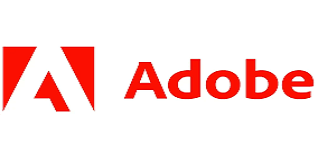The MEAN stack (MongoDB, Express.js, Angular, and Node.js) is widely recognized for its efficiency in building dynamic, full-stack web applications. Below are some key applications where the MEAN stack is highly suitable:
1. Single-Page Applications (SPAs)
MEAN stack is ideal for developing single-page applications, where users can interact with the application without reloading the page. Angular enables the dynamic rendering of content, while Node.js and Express.js provide efficient server-side support. Examples of SPAs include Gmail, Google Maps, and Trello, where the interface remains responsive and interactive without constant page refreshes.
2. E-Commerce Platforms
E-commerce websites require robust, scalable platforms to manage high traffic and handle transactions securely. MEAN stack’s flexibility makes it well-suited for building such platforms. MongoDB can manage large volumes of product data and user information efficiently, while Node.js allows for quick response times, making the user experience smooth even during peak times. Examples of features include product catalogs, shopping carts, and payment gateways.
3. Content Management Systems (CMS)
CMS platforms that allow users to create, manage, and modify content dynamically benefit from the MEAN stack. With MongoDB managing content databases, and Angular providing real-time updates on the front-end, the MEAN stack enables efficient handling of content-heavy websites. It’s used in applications like blogs, news portals, and documentation websites, where constant updates are needed.
4. Real-Time Applications
Real-time applications like chat applications, live tracking systems, and collaborative tools rely on immediate data synchronization across users. The MEAN stack’s non-blocking architecture with Node.js allows for high-speed real-time communication, while MongoDB handles the storage and retrieval of messages or live data efficiently. Platforms like Slack and WhatsApp use similar architecture to deliver real-time messaging services.
5. Social Media Platforms
Social networking sites require dynamic user interfaces and efficient data handling, making the MEAN stack a good choice. With Angular, developers can create interactive and responsive UIs, while Node.js supports real-time updates and scaling for large user bases. MongoDB‘s ability to handle large datasets ensures that social media platforms can manage profiles, messages, posts, and interactions smoothly. The MEAN stack is commonly used for creating features like timelines, notifications, and chat functions.
6. Enterprise Applications
MEAN stack is also well-suited for enterprise-level applications, where high performance and scalability are crucial. Large organizations often need custom internal tools or platforms for project management, HR systems, CRM tools, and financial dashboards. The MEAN stack offers a flexible and efficient environment for building these internal applications, helping businesses streamline their operations. MongoDB’s document-based model allows for easy handling of complex data structures often required by enterprises.
7. Cloud-Based Applications
The MEAN stack is often used for building cloud-based applications due to its scalability and ability to handle large volumes of data efficiently. Applications that store and process data in the cloud, such as file storage systems, data analytics platforms, or SaaS applications, benefit from MongoDB’s capacity to manage large databases, while Node.js provides the framework to handle high traffic and multiple requests simultaneously.
8. Streaming Applications
Streaming platforms, such as music, video, or live sports streaming, require seamless handling of large data transfers in real-time. MEAN stack’s non-blocking nature, with Node.js at its core, supports efficient streaming by enabling multiple connections simultaneously without sacrificing performance. This makes MEAN ideal for building platforms like Netflix or Spotify, which need to deliver large volumes of media to users instantly.
9. Location-Based Services
Location-based services, like ride-sharing apps (e.g., Uber or Lyft), require real-time updates and geolocation data. MEAN stack enables developers to build these systems by integrating features like real-time tracking and route management. MongoDB’s flexibility allows for easy storage and management of geolocation data, while Node.js processes real-time requests efficiently.
10. Data-Intensive Dashboards
For applications that require
data visualization and analysis, MEAN stack is a great choice. Dashboards for monitoring performance, analytics, and metrics often need to display real-time data changes. MEAN’s combination of Node.js and MongoDB allows for the swift retrieval and updating of data, while Angular is perfect for creating interactive, user-friendly visualizations. These dashboards can be used in industries such as finance, healthcare, and IT, where large datasets need to be interpreted quickly and accurately.




































































